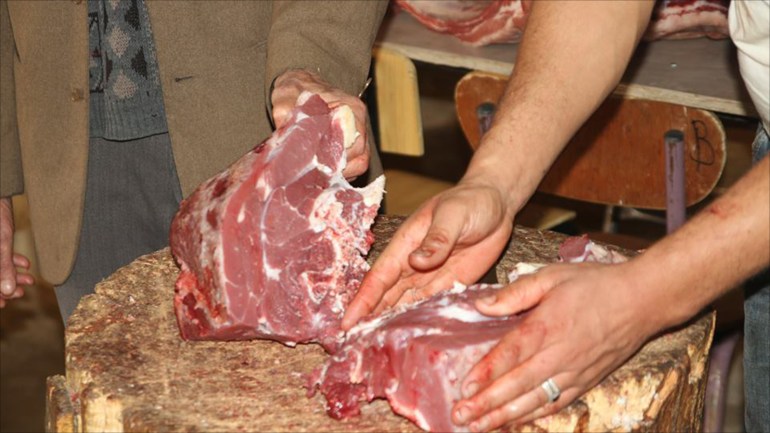Eid al-Adha is a rare opportunity to eat meat for many of our people, especially with the high rates of poverty, up to 42% of the world's population, due to the Corona pandemic, according to World Bank estimates.
After the Eid al-Adha prayer, the poor expect the sacrifice until the fourth day of the sunset, but some of the owners of the sacrifices neglect the rules or “etiquette of distributing meat”, which is very important according to etiquette experts who stress the need to follow the rules in order to complete their gifts by taking into account the feeling of the poor And the needy.
"Distribution" etiquette
There are rules for the distribution of sacrificial meat to the poor, as the etiquette expert Basma Azab confirms that the etiquette rules, specifically with regard to the distribution of sacrificial meat, are taken from the Qur’an and Sunnah and the best example is the application of these rules the Messenger, peace be upon him.
According to the Egyptian Dar Al-Iftaa, the best in the sacrifice, which is a confirmed Sunnah for the Holy Prophet, is to divide into three, one third for the victim and for his household, one third for relatives, and one third for the poor.
Basma explains to Al-Jazeera Net some of these rules:
1- Distributing meat immediately upon slaughter until it is fresh, in addition to the needy and needy waiting impatiently for that occasion to eat meat.
2- Packaging meat cleanly and cheerfully, so it is not in unclean leaves or transparent bags that show what is inside.
3- It is imperative that the flesh be free of fats as much as possible, especially for the elderly, and the rule is to give people what you like to eat.
4- The presentation of the meat must be accompanied by a smile, with exchanges of congratulations and blessings.
5- Sending meat to the homes of the poor, to avoid crowding, especially at the present time, with the spread of the Corona pandemic, and taking into account the feelings of the needy from the poor and the needy, to be sent immediately after the end of the slaughter.
6- The slaughtering process must take place in the places designated for it, and not in the streets and roads, so that the roads are not flooded with blood and odors that harm children and the elderly in particular.
7- Many prefer eating the bowels of the sacrifice, such as the liver and others. If you decide to distribute some bowels to the poor, give it as an additional portion over the meat and do not classify it from its basic share.
8- Take into account the size of the family to which the meat is sent, and accordingly the amount of meat you provide it with.
9 - The skin or fur of the sacrifice cannot be considered part of the butcher's fee, and in the event that you decide to give the skin to the butcher, it is a donation and is not counted in any way from its fee.
How to eat sacrifice meat and offal?
As for the distribution of meat, rules for eating the Eid al-Adha table are etiquette and also rules that cannot be ignored. It does not mean that Eid al-Adha meals contain fattah, meat, and the stalwarts (empty or peripheral) and the knees in which the etiquette rules are ignored, the most prominent of which is according to Basma:
1- One of the most important rules when dealing with these items is not to make chewing food and not to justify it in any pretext.
2- The food is eaten with a fork and a knife in the usual ways. As for the streets, it is eaten with a spoon and a fork. The trotters are fixed with a fork and cut into pieces with a spoon until they are completely free of bone and eaten with the spoon.
3 - Taking into account the amount of food that is placed in the dish, there is no need to fill the dish at the end, and it is sufficient to put an appropriate amount and when needed you can add more, so that the excess food is not wasted.

